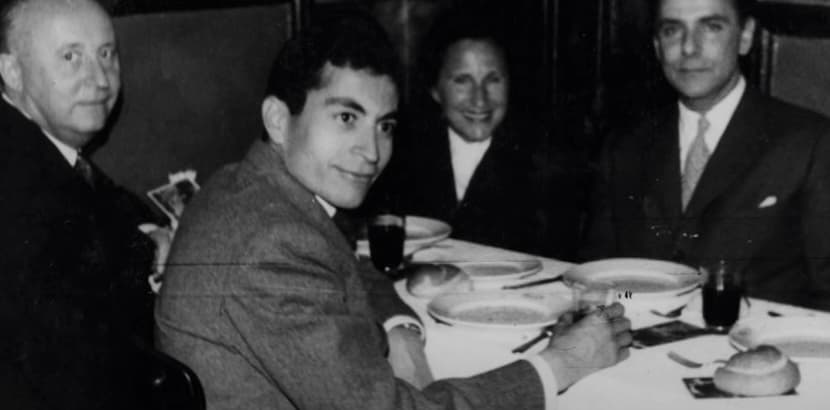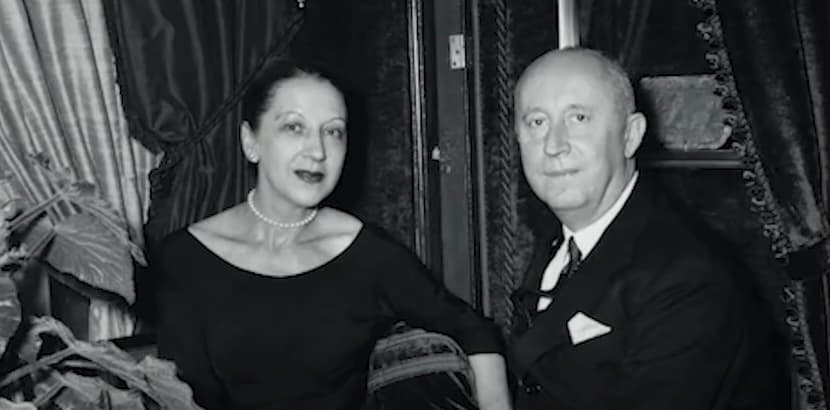Introduction
From the coastal landscapes of Normandy to the chic boulevards of Paris, the story of Christian Dior is one of dreams, resilience, and revolution. The legacy of this iconic designer is intrinsically intertwined with his youth and early experiences, painting a vivid tapestry of fashion’s evolution.
Young Christian Dior: The Formative Years
Christian Dior, the renowned fashion designer, was born on January 21, 1905, in a picturesque seaside town in Normandy, France. His early years laid the foundation for the remarkable career that would follow. This article delves into the formative years of Christian Dior, focusing on his birthplace, relocation to Paris, family background, and key events during his youth.
Birthplace
Christian Dior’s story begins in the quaint coastal town of Granville, situated in the Normandy region of France. Born into a family of affluence, he enjoyed a comfortable upbringing amidst the serene surroundings of this coastal town. Granville’s natural beauty and proximity to the sea would later influence his design aesthetic.
Relocation
At the age of five, young Christian Dior and his family relocated to Paris. This move marked a significant turning point in his life, as it exposed him to the bustling art and culture of the French capital. Paris, known as the epicenter of fashion and creativity, would play a pivotal role in shaping Dior’s artistic aspirations.
Family Background
Christian Dior was born into a family of privilege. His father, Maurice Dior, was a prosperous fertilizer manufacturer, providing the family with financial security. This affluent background allowed Christian the freedom to explore his artistic interests without the constraints of financial worries. Although his parents had hoped he would pursue a career in diplomacy, Dior’s heart was always set on the arts.
Key Events from His Youth
Dior’s passion for creativity became evident in his early years. Several key events during his youth stand out as formative experiences that would shape his future career:
- Selling Hand-Drawn Sketches in Paris for Pocket Money: Even as a young boy, Christian Dior displayed remarkable artistic talent. He began selling hand-drawn sketches on the streets of Paris to earn pocket money. This entrepreneurial endeavor not only provided him with financial independence but also allowed him to refine his artistic skills.
- Opening an Art Gallery with His Father’s Investment: One of the most significant milestones of Dior’s youth was the opening of an art gallery. With the financial support of his father, he established an art gallery called “Galerie Jacques Bonjean” in 1928. This gallery exhibited works of renowned artists, including Pablo Picasso. It was here that Dior was exposed to the avant-garde art scene of the time, and his appreciation for art and aesthetics deepened.
The Turn of Events

Despite the success of his gallery, fate had other plans. The trifecta of the Great Depression, the devastating loss of his mother and brother, and his father’s business collapse marked a somber period for young Christian Dior. However, adversity only fueled his passion.
Early Life and Adversity
Christian Dior was born on January 21, 1905, in Granville, France, to a prosperous family. Despite his privileged upbringing, fate dealt him a series of setbacks that would eventually lead him to the world of fashion.
- The Great Depression: The 1929 Great Depression hit the Dior family’s business hard, causing them to face financial hardships. This economic downturn served as an early test of Christian Dior’s resilience and adaptability.
- Personal Loss: Tragedy struck the Dior family when Christian lost both his mother, Madeleine Dior, and his younger brother, Raymond, within a short span of time. These losses left a profound impact on his life and deepened his resolve to pursue his passion.
Entrance into the World of Fashion
Christian Dior’s entry into the fashion world can be attributed to his determination and an opportune encounter with designer Robert Piguet.
- Working under Robert Piguet: In the mid-1930s, Christian Dior began his career in fashion by working as an apprentice for renowned designer Robert Piguet. This apprenticeship marked the beginning of his journey into the world of haute couture.
Military Service and Return
In 1940, the outbreak of World War II brought about a significant turning point in Christian Dior’s life.
- Military Service: Christian Dior was drafted into the French army in 1940, like many other young men of his generation. His time in the military exposed him to a different world and challenged his creative aspirations.
- Post-War Collaboration: After his return from military service, Christian Dior’s career took a pivotal turn. He collaborated with couturiers Lucien Lelong and later Pierre Balmain. These collaborations laid the foundation for his future success in the fashion industry.
Dior’s Fashion Revolution
Christian Dior embarked on a groundbreaking journey in the fashion world, establishing his own couture house and introducing the iconic “New Look.” This transformative period in fashion history, marked by the redefinition of feminine style, set the stage for Dior’s enduring legacy.
The Birth of Dior’s Couture House
In December 1946, Christian Dior founded his own fashion couture house, located at 30 Avenue Montaigne in Paris. This marked a significant step in his career, as he sought to revolutionize the world of haute couture.
The “New Look” Revolution (February 12, 1947)
On February 12, 1947, Christian Dior unveiled his groundbreaking “New Look” collection, which became an instant sensation and a symbol of post-war optimism. The “New Look” was characterized by several signature elements:
- Cinched-in Waists: Dior’s designs featured fitted bodices and cinched-in waists, creating an hourglass silhouette that celebrated and accentuated the female form.
- Embodied Full Skirts: The collection’s full, voluminous skirts exuded a sense of luxury and elegance, symbolizing a departure from the austerity of wartime fashion.
- Lavish Use of Fabric: Dior’s bold use of fabric, in contrast to wartime rationing, reflected a sense of abundance and a return to opulence.
This audacious departure from wartime fashion norms embodied the joys of life post-war and celebrated femininity in a way that resonated with women around the world. Notably, celebrities like Margot Fonteyn and Rita Hayworth became enthusiastic endorsers of Dior’s “New Look,” further catapulting his fame and influence.
Further Expansions and Innovations
Dior’s creative genius and entrepreneurial spirit led to several significant expansions and innovations in the years following the introduction of the “New Look.”
- 1948: Luxury Ready-To-Wear House in New York: In 1948, Dior expanded his reach by establishing a luxury Ready-To-Wear house on Fifth Avenue in New York City. This move brought his exquisite designs to a broader audience and solidified his presence in the United States.
- Introduction of “Miss Dior” Fragrance: As a tribute to his sister, Catherine, Christian Dior introduced the iconic fragrance “Miss Dior.” This fragrance became an integral part of the Dior brand and added a sensory dimension to his vision of timeless elegance.
- 1949: Expanding Beyond Clothing: Recognizing the importance of a complete ensemble, Christian Dior ventured into designing accessories. He created exquisite shoes, gloves, and hats to complement his couture creations, ensuring that every aspect of a woman’s attire was a testament to his meticulous attention to detail and style.
Dior’s Unique Touch

Dior’s designs were not just cloth and thread; they were a part of his identity.
Homage to His Hometown
Dior’s connection to his hometown of Granville, France, was a recurring theme in his collections. He paid tribute to his roots through subtle and meaningful gestures:
| Collection | Coat Name | Significance |
|---|---|---|
| Various | Granville | In every collection he presented, Christian Dior included a coat named after his beloved hometown, Granville. This act not only honored his origins but also served as a reminder of the place that played a pivotal role in shaping his life and aesthetic sensibilities. |
A Floral Affection
Flowers held a special place in Dior’s heart and were a constant presence in his work, most notably in his runway shows:
| Dior’s Fondness | Favorite Flowers | Symbolism |
|---|---|---|
| Lilies | Yes | Dior had a particular fondness for lilies, and he made sure that each of his fashion shows featured a model carrying or adorned with lilies. These elegant and fragrant flowers were a symbol of purity and grace, mirroring the essence of his designs. |
Tarot Cards and Mysticism
Christian Dior’s fascination with tarot cards and mysticism added a layer of intrigue to his creative process:
| Ritual | Tarot Card Consulting | Belief and Purpose |
|---|---|---|
| Before Fashion Show | Yes | It was a ritual for Dior to consult his trusted card reader before commencing a fashion show. He believed in the guidance and inspiration that the cards could offer. This mystical practice infused an element of unpredictability and mystique into his designs, making them even more enigmatic. |
The Legacy Continued
The year 1955 marked a pivotal moment in the history of the House of Dior. It was during this year that a young and talented Yves Saint Laurent joined the fashion house as Christian Dior’s design assistant. This collaboration set the stage for the continuation of Dior’s legacy and innovations in the world of haute couture.
Yves Saint Laurent’s Entry into Dior
In 1955, Yves Saint Laurent, a budding fashion designer, had the opportunity of a lifetime when he joined the House of Dior. This partnership would not only shape his own illustrious career but also ensure the continuity of Dior’s vision:
- Yves Saint Laurent’s Role: Yves Saint Laurent started as Christian Dior’s design assistant, a role that allowed him to learn from the master and gain invaluable experience in haute couture.
- Dior’s Confidence in Saint Laurent: Christian Dior saw immense potential in Yves Saint Laurent and believed in his talent. He even confided in Saint Laurent’s mother, Lucienne Mathieu-Saint Laurent, about her son’s destined role in the fashion house’s future.
Dior’s Sudden Passing
Tragically, the fashion world was shaken by the sudden and untimely passing of Christian Dior in 1957. He passed away at the age of 52, leaving behind an indelible mark on the industry. Dior’s death marked the end of an era but also signaled the beginning of a new chapter:
- Impact of Dior’s Passing: Christian Dior’s death was a profound loss to the fashion world. However, his legacy continued through the talented designers who succeeded him, particularly Yves Saint Laurent.
Yves Saint Laurent’s Ascendance
With the passing of Christian Dior, Yves Saint Laurent was thrust into the spotlight and took over as the creative director of the House of Dior. This transition would prove to be a critical juncture in the history of the brand:
- Continuation of Dior’s Vision: Yves Saint Laurent continued Dior’s commitment to innovation and elegance. His designs paid homage to Dior’s aesthetic while also infusing his own unique style.
- Innovations by Yves Saint Laurent: Under Saint Laurent’s creative leadership, the House of Dior introduced iconic pieces like the trapeze dress and the A-line silhouette, contributing to the brand’s ongoing success.
Conclusion
Young Christian Dior’s journey from the streets of Normandy to the pinnacle of the fashion world is emblematic of resilience, innovation, and a deep-rooted passion for art. Through adversities and triumphs, Dior’s legacy stands as a testament to his indomitable spirit and revolutionary vision. The world of fashion will forever be indebted to the genius of Christian Dior.
For enhanced comprehension, refer to this video.
FAQs
The “New Look” was Dior’s response to the post-war era, aiming to celebrate femininity, joy, and abundance.
It was named in honor of Dior’s sister, recognizing her bravery during WW2.
Dior revolutionized post-war fashion, emphasizing femininity and opulence. His holistic approach to fashion, considering not just clothing but the entire ensemble, set a new standard.







